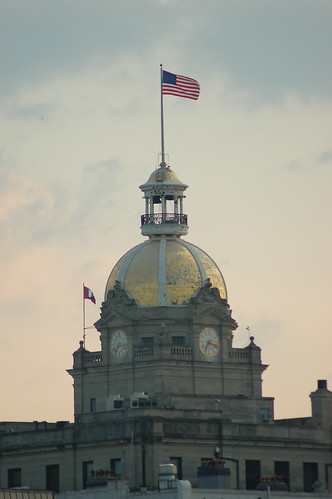Last month I had a conversation with a well-meaning citizen, who was fretting about the safety of cyclists she observed on U.S. Highway 80 east of Savannah — otherwise known as "Tybee Road." She wondered if there was a solution for keeping these cyclists off the narrow, high speed route to the beach. She asked, "What if the city or county built some kind of facility? Then they could all go there to ride so they wouldn't have to be out on the streets."
Sadly her perception of bicyclists and their needs is probably shared by a significant portion of the local population. As I've so often complained over the last two years, bicycles are often perceived as toys or as exercise equipment, but not as vehicles. I tried to explain that her proposed cycling park would be absolutely useless to me and others who use bicycles for transportation. She didn't seem to get it.
And now the good news:
- The number of regular bicycle commuters working in my building has remained high throughout the summer. The bike rack usually starts emptying out as the temperature climbs. Not this year. They just keep on pedaling.
- A community activist, who has worked tirelessly to fight "road improvement projects" that destroy neighborhoods and induce additional automobile traffic, has recently taken up transportational cycling.
- Finally, there's the Xtracycle situation. I first mentioned the product here on Thursday, Aug. 18, 2005 and early last month I finally ordered a Free Radical of my own. While I was waiting for it to arrive, I started prepping myself for the role of Savannah's only Xtracycle owner. Then I saw a man riding one down Habersham Street and a couple weeks later, a woman riding a Free Radical-equipped Trek mountain bike downtown. So, I'm happy to report that I'm one of at least three weirdos riding around Savannah on "Sports Utility Bicycles." I hope there will be more of us soon.













